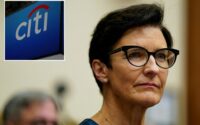San Francisco takes big hit as mall owner Westfield flees
The pain is getting deeper for San Francisco as the owners of one of the biggest shopping centers in the city decided to walk away after 20 years, in the face of declining sales, occupancy and foot traffic.
Unibail-Rodamco-Westfield said late on Monday it will transfer its Westfield San Francisco shopping mall to lenders.
The announcement followed Park Hotels & Resorts statement last week that it ceased making payments toward a $725 million mortgage linked to its Hilton San Francisco Union Square and Parc 55 hotels.
Westfield’s decision is the latest blow to San Francisco, the once-booming tech hub that has been particularly hard hit by the pandemic.
Office buildings lie empty as more people work from home, compounded by major layoffs by large tech companies.
The hit coupled with a rising US interest rate environment has made it costlier for companies to refinance their outstanding debt on these buildings, prompting loan payment cancellations or transfers of the properties back to lenders.

The potential for difficulties from commercial real estate to flow through to banks is also becoming a bigger worry for investors and regulators.
“Westfield’s move shows they see risk in the city losing critical mass and is in anticipation of a long period of suffering for downtown San Francisco,” said Thomas LaSalvia, Moody’s Analytics Head of Commercial Real Estate Economics.
“We agree there is trouble ahead but are more optimistic that after a couple of years, occupancy rates and foot traffic will bounce back in a city that is a cultural destination and still has critical mass in high skilled labor working in the life sciences, biotech and tech sector.”

Warren Wachsberger, CEO of Aecom Capital, a real estate investor, said mall owners like Unibail-Rodamco-Westfield are focusing on their best properties.
“The best malls are still doing well. Westfield Century City is full, right?” Wachsberger said, referring to the company’s mall in Los Angeles. “But if you go out to some of these older malls, they’re zombies.”
“So it’s this dichotomy, and that’s why you see the big mall companies shifting their strategy, saying we’re going to focus on our best stuff, get rid of our worst stuff,” he said.

Westfield said that foot traffic in the mall decreased to 5.6 million visits last year, from 9.7 million in 2019, a 43% drop at a time when its US Flagship portfolio saw a 98% recovery.
Sales declined to $298 million in December 2022 from $455 million in 2019, it added.
Occupancy levels have dropped to 55% after popular brands such as apparel retailers Nordstrom and Gap-owned Banana Republic announced store closures owing to difficulty in operations.


